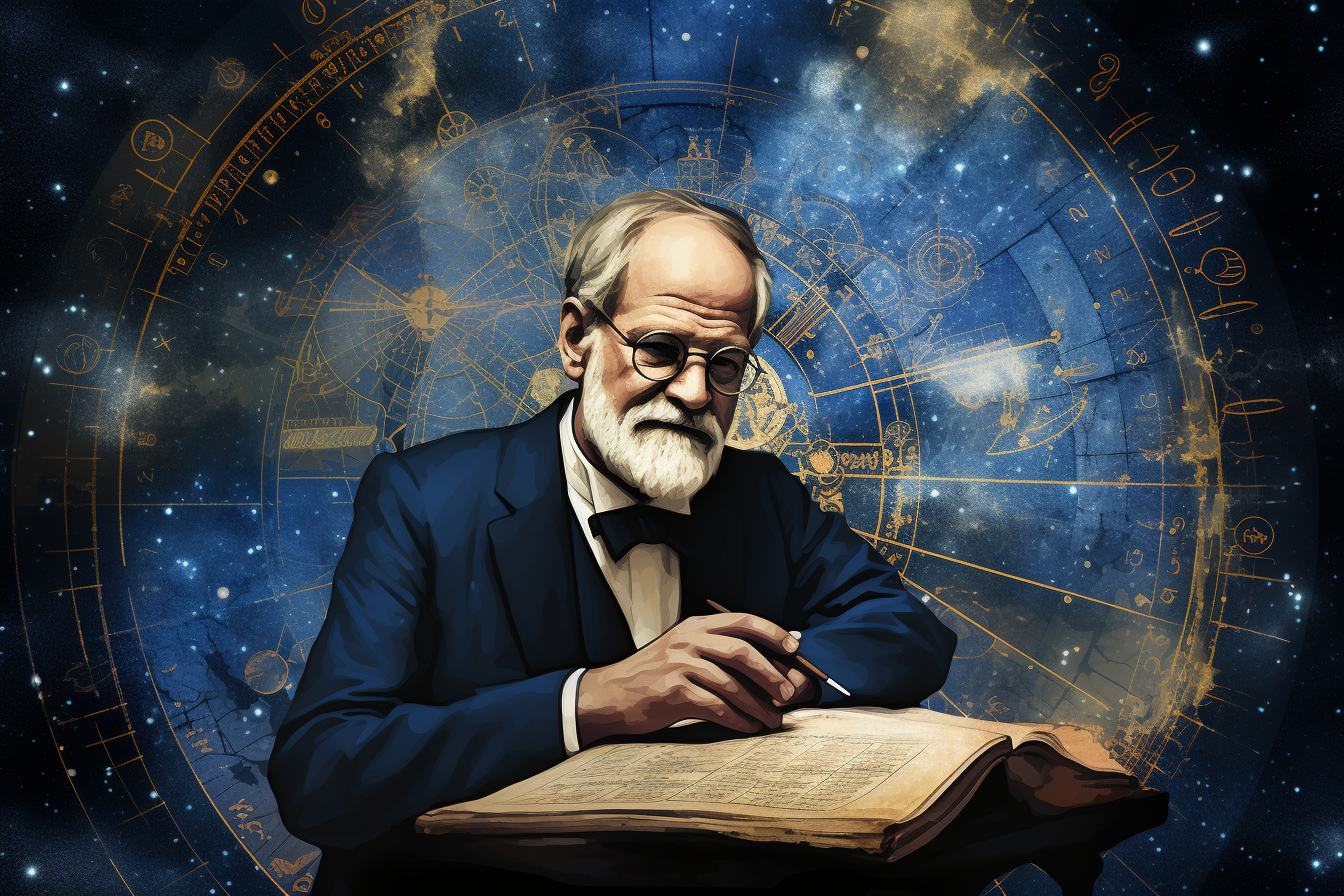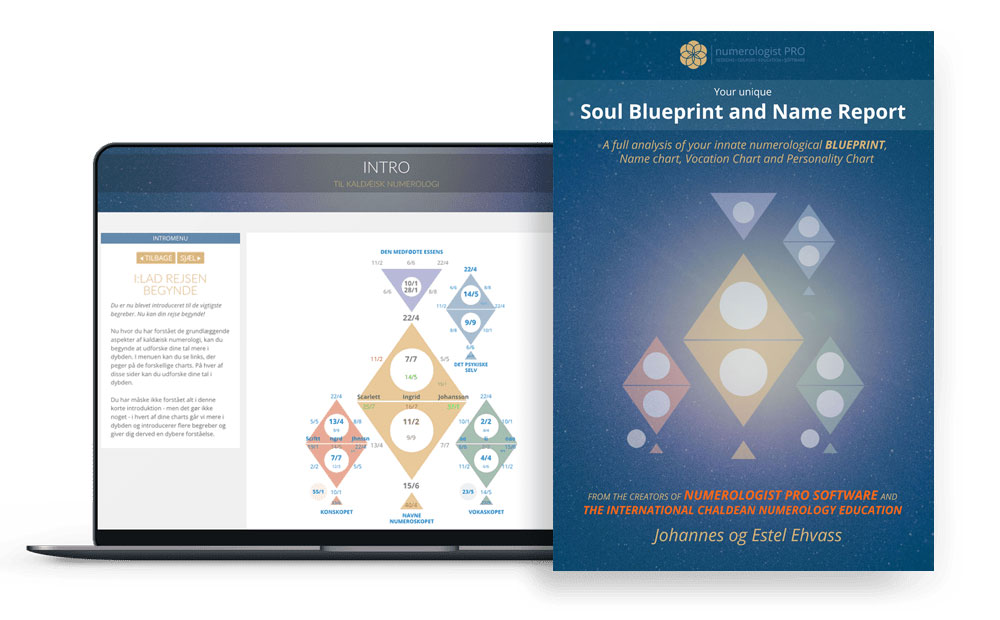The Dawn of Psychological Astrology

Johannes Ehvass
Welcome, dear reader! The Enlightenment, often hailed as the Age of Reason, ushered in an era where logic and empirical evidence reigned supreme. As society championed scientific discovery and rational thought, astrology faced a unique challenge. Positioned at the intersection of ancient beliefs and emerging skepticism, the celestial practice found itself both critiqued and revisited. Yet, even amidst this intellectual revolution, the allure of the stars persisted, reflecting the enduring human desire to find meaning beyond the tangible. Join me as we explore this dynamic period, where astrology navigated the delicate balance between tradition and transformation.
Introduction to Modern Psychological Astrology
Background: The Confluence of Astrology and Psychology
The Ancient Roots

Historically, astrology and psychology were not distinct fields but were intertwined in the interpretation of human behavior and fate.
Ancient civilizations, from Babylonians to Greeks, used astrology as a lens to understand the psyche, emotions, and human nature. They believed celestial events influenced human behavior and personality. This holistic view posited that the universe and human soul were interconnected.
Separation of Disciplines
As time progressed, especially during the Renaissance and Enlightenment periods, the domains of science, religion, and metaphysics underwent significant differentiation. Astrology, once a revered science, started facing skepticism and was slowly estranged from the mainstream academic discourse. In contrast, psychology began to emerge as an independent scientific field in the late 19th century, focusing on empirical methods and observations.
20th Century: Reunion of the Two Fields
The Rise of Depth Psychology
The 20th century witnessed a revival in the synthesis of astrology and psychology, particularly with the advent of depth psychology. This subfield, founded by figures like Carl Jung, aimed to explore the deeper, unconscious aspects of the human psyche. Depth psychologists postulated that the human psyche was not just a product of personal experiences but was also influenced by collective symbols, myths, and archetypes.
Astrology’s Psychological Turn
Simultaneously, modern astrologers began to see the zodiac not just as predictive tools but as symbols reflecting psychological processes. They posited that planetary positions and movements corresponded with inner psychological dynamics. Birth charts were no longer seen merely as destiny maps, but as tools for self-reflection, personal growth, and understanding one’s psychological patterns.
Key Figures and Concepts in Psychological Astrology
Dane Rudhyar: The Pioneer
Dane Rudhyar, an influential figure in modern astrology, combined Jungian psychology and astrology to propose a more person-centered, holistic approach. He introduced the idea of the “Life Cycle,” suggesting that transits and progressions in an individual’s chart can mirror psychological developments and crises.
Liz Greene: Synthesis of Myth and Psyche
Another pivotal figure, Liz Greene, further integrated Jungian archetypes and mythology into astrological interpretations. Her work focused on the psychological underpinnings of astrological symbols, arguing that planetary energies could be understood as universal psychological patterns or archetypes.
Applications and Implications
Therapeutic Use of Astrology
With the blending of psychological insights, astrology started finding its way into therapeutic settings. Astrological counseling became a niche, where astrologers, equipped with psychological training, used birth charts to assist clients in self-awareness, personal development, and understanding their behavioral patterns.
Personal Growth and Self-awareness
Modern psychological astrology is less about predicting specific events and more about understanding oneself. It offers tools for introspection, allowing individuals to confront their shadows, understand their strengths, and navigate their life cycles with greater self-awareness.
Conclusion: The Future of Psychological Astrology
The amalgamation of astrology and psychology has breathed new life into both disciplines. While skeptics remain, many are now exploring the rich tapestry of the human psyche through the lens of the stars, finding value in the symbolic and archetypal language of astrology. As our understanding of the human mind deepens, it’s likely that the interplay between these fields will continue to evolve, offering nuanced insights into the intricate dance of the cosmos and the human soul.
Carl Jung, Synchronicity, and the Archetypes
Carl Jung: A Brief Introduction
Foundations of Analytical Psychology
Carl Gustav Jung, a Swiss psychiatrist and psychoanalyst, founded analytical psychology. Distancing himself from his mentor Sigmund Freud, Jung delved deeper into the collective unconscious, embracing concepts of archetypes, the shadow, and individuation.
Jung’s Personal Interaction with Astrology
While not an astrologer, Jung had a profound interest in astrology. He often used horoscopes as supplementary information in his patient analyses, noting correlations between astrological constellations and the psychological profiles of his patients.
Synchronicity: The Cornerstone of Jung’s Astrological Interest
Defining Synchronicity
Jung coined the term “synchronicity” to describe “meaningful coincidences” that cannot be explained by cause and effect. These are events that hold symbolic significance for the individual but appear unrelated on the surface.
Astrology as a Synchronistic System
Jung believed that the correspondence between celestial events and earthly happenings—central to astrological belief—was a manifestation of synchronicity. The natal chart, a snapshot of the heavens at the time of birth, became a symbolically meaningful, synchronistic reflection of an individual’s psyche.
The World of Archetypes
What are Archetypes?
Archetypes, as proposed by Jung, are primordial images or symbols shared by humanity. They form the structural elements of the collective unconscious and emerge in dreams, myths, and even in the symbols of astrology. Archetypes are universal, recurring motifs or themes that have been present throughout human history.
Astrological Planets as Archetypal Symbols
Jung posited that the planets and signs in astrology could be understood as archetypal expressions. For instance:
– **Sun**: The conscious ego, the central archetype of expression and life force.
– **Moon**: The realm of the unconscious, emotions, and instinct.
– **Mars**: The warrior archetype, representing aggression and drive.
– **Venus**: The lover, symbolizing harmony, beauty, and relational aspects.
Each planet and sign encapsulates a specific archetype, providing depth and nuance to astrological interpretations.
Jung’s Exploration of Astrology in Research
Synchronicity and Natal Charts
Jung conducted a study comparing the natal charts of married couples to assess any recurring patterns. His findings hinted at certain astrological aspects frequently appearing between partners, suggesting a synchronistic relationship.
Archetypes and Astrological Houses
Jung also explored the twelve astrological houses as twelve different arenas of life, each linked to specific archetypal experiences. For example, the 4th house related to home might connect with the “Mother” archetype, while the 10th house of career could resonate with the “Father” or “King” archetype.
Legacy and Implications for Modern Astrology
The Psychological Depth in Astrological Analysis
Jung’s exploration brought a psychological depth to astrology. Modern astrologers often integrate Jungian concepts, viewing celestial configurations not just as deterministic forces but as symbolic reflections of inner psychodynamics.
Critiques and Counterarguments
While Jung’s integration of astrology into his analytical framework was groundbreaking, it was not without critics. Many in the scientific community, and even some within the psychoanalytic circle, viewed this as a deviation from empirical rigor. They argue that the subjective nature of archetypal and astrological interpretations makes them unreliable.
Conclusion: The Symbiosis of Depth Psychology and Astrology
Jung’s foray into the world of astrology brought about a significant paradigm shift. By viewing the zodiac and planetary movements as symbolic representations of the human psyche’s archetypal patterns, he bridged two seemingly disparate domains. This legacy continues today as astrologers worldwide delve into the depths of the human soul, guided by the stars and illuminated by the rich tapestry of archetypes.
Freud, Dreams, and the Stars: A Comparative Analysis
Introduction to Sigmund Freud
Freud’s Pioneering Psychoanalytic Theory
Sigmund Freud, an Austrian neurologist, is best known as the founder of psychoanalysis. His revolutionary ideas on the unconscious mind, dream interpretation, and the Oedipus complex reshaped our understanding of human psyche and behavior.
Freud’s Stance on Astrology
While Freud’s personal position on astrology was more skeptical compared to Jung, it’s intriguing to find potential parallels between his psychoanalytic theories and astrological concepts.
Dream Interpretation: Freud’s Window into the Unconscious
Manifest and Latent Content
Freud believed that dreams were the “royal road to the unconscious.” He distinguished between the dream’s manifest content (what we remember) and the latent content (the underlying meaning or desire). This distinction mirrors the observable planetary movements in astrology and their interpreted symbolic meanings.
Universal Symbols in Dreams
Although Freud did not ascribe to the idea of universal symbols as Jung did, he acknowledged that certain symbols might repeatedly appear in different individuals’ dreams. This idea has a parallel in astrology where planetary symbols hold consistent meanings across cultures.
Comparative Elements: Freudian Theory and Astrology
The Id, Ego, and Superego
Freud’s structural model of the psyche consists of the id (basic instincts), the ego (the conscious self), and the superego (the internalized societal and parental standards). These can be loosely correlated with:
– **Moon in Astrology**: Representing instincts and unconscious drives, much like the id.
– **Sun in Astrology**: Symbolizing the conscious self and ego identity.
– **Saturn in Astrology**: Reflecting boundaries, restrictions, and societal norms, resonating with the superego.
Libido and Thanatos
Freud also proposed two primary drives: Libido (life drive) and Thanatos (death drive). In astrological terms, these can be related to:
– **Venus**: Associated with attraction, pleasure, and life-affirming energies, representing Libido.
– **Pluto**: Tied to transformation, endings, and rebirth, echoing the essence of Thanatos.
Freud’s Critiques and Possible Astrological Counterarguments
Skepticism Toward Astrology
Freud, rooted in scientific empiricism, was often skeptical of anything that veered into the metaphysical, including astrology. He viewed astrology as a form of “illusion,” a term he used for beliefs that derive from human wishes rather than reality.
Astrology’s Rebuttal: The Unconscious as a Cosmic Mirror
Modern astrologers might argue that astrology does not claim to be a deterministic science but rather a symbolic language that mirrors the collective unconscious. Much like how Freud interpreted dreams to reveal the unconscious, astrologers interpret celestial patterns to unveil a deeper cosmic narrative.
Integrating Freudian and Astrological Perspectives
The Synthesis of Depth Psychology and Cosmic Interpretation
While Freud might not have endorsed astrology, the overlaps between his psychoanalytic concepts and astrological symbolism are hard to ignore. Contemporary thinkers might see value in integrating these disciplines, using both as complementary tools to understand human behavior and psyche.
Modern Astrological Practices and Freudian Insights
Many modern astrologers, especially those with a psychological bent, might incorporate Freudian ideas into their readings. For example, understanding a client’s early childhood, as emphasized by Freud, can provide context when interpreting their Moon sign or fourth house placements, both associated with home and family.
Conclusion: A Dance Between the Stars and the Psyche
Freud’s pioneering work in psychoanalysis and the rich symbolism of astrology may seem worlds apart, but they intersect in fascinating ways. Both disciplines offer profound insights into the human psyche, albeit from different angles. By exploring these connections, we gain a broader understanding of ourselves, both in the context of our inner worlds and the vast cosmic landscape that surrounds us.

Johannes & Estel: Renowned authorities in Numerology, Astrology, and the esoteric arts. As the founders of Scandinavia's premier Numerology school, we're delighted to share our insights through this curated series on astrology. Dive in and discover the stars.
The Worlds Most Advanced Numerology Report

Your birthdate reveals your unique life purpose, potentials, talents, weaknesses, and karma in this life.
Your names show what you attract into your life regarding your career, relationships, happiness, money, and success.
GET THE REPORT HERE
Introduction to Astrology
The history of Astrology
Moving beyond deterministic astrology
Foundation of Astrology: Planets, Signs and Houses
Astrology and the Holographic Universe
The Holographic Universe
The Human Psyche as a Mirror to The Solar System
The Human Body as a Mirror to The Star Signs
Astrology Background
Egyptian Astrology
Mayan Astrology
Chinese Astrology
Indian Astrology - Jyotish
Celtic Astrology
Tibetan Astrology
Mesopotamian Astrology
Early Mesopotamian Astrology: The Dawn of Celestial Divination
Enuma Anu Enlil: The Epicenter of Babylonian Celestial Omen Interpretation
Babylonian and Chaldean Astrology
Babylonian and Chaldean Astrology
Chaldean influence and evolution
Chaldean Wisdom: Safeguarding and Transmitting Astrological Knowledge
Hellenistic Astrology
Hellenistic Astrology background
Claudius Ptolemy and Tetrabiblos
Vettius Valens
Dorotheus of Sidon
Persian Astrology
Persian Astrology background
Sassanian Astrology
Late Antiquity and The Transition Period
Late Antiquity and The Transition Period
Hellenistic to Islamic Transition: The Torchbearers of Astrological Wisdom
Islamic Golden Age
Arabian Astrology Background
Arabian Astrology Contributions
Medieval Astrology
Introduction: The Medieval Cosmos
Monastic Preservers: Astrological Knowledge in the Dark Ages
Astrology in Medieval Medicine
Kings, Queens, and Constellations: Astrology in the Medieval Court
The Church and the Stars: A Contentious Relationship
Universities and Scholastic Pursuits: Academic Astrology
Astronomy & Astrology: Tools of the Trade
Medieval Astrological Houses and the Synthesis of Traditions
Transition to the Renaissance: Humanism and the Celestial Arts
Reflections: Medieval Astrology's Echoes in Modern Practice
Astrological Art of the Middle Ages
Famous Medieval Astrologers
Medieval Astrological Texts
Renaissance Astrology
Renaissance Humanism and Astrology
Scientific Advancements and Astrology
The Social Fabric: Astrology in Everyday Renaissance Life
Court Astrologers of the Renaissance
Controversies and Conflicts: Astrology Under Scrutiny
Renaissance Texts and Authors: Continuation of a Tradition
Astrology and Art: Celestial Imagery in the Renaissance
Renaissance Astrological Practices: Evolutions and Innovations
End of the Renaissance: The Gradual Decline of Astrological Influence
Renaissance Astrology's Echo in the Modern World
Enlightenment Astrology
Introduction: The Enlightenment and Astrology
Challenging the Stars: Astrology's Critics during the Enlightenment
Astrology and the New World
Astrology in the 19th Century
The Dawn of Psychological Astrology
Astrology in the 20th Century: A Modern Renaissance
Astrological Associations and Schools
Modern Controversies and Astrology
Astrology and Popular Culture
Astrology and Technology
Current Trends and Future Directions in Astrology
Conclusion: Reflecting on Astrology's Evolution
The Planet Significances
The Sun in Astrology
The Moon in Astrology
Mercury in Astrology
Venus in Astrology
Mars in Astrology
Jupiter in Astrology
Saturn in Astrology
Uranus in Astrology
Neptune in Astrology
Pluto in Astrology
Chiron in Astrology
Black Moon Lilith in Astrology
Pars Fortuna in Astrology
Ceres in Astrology
Houses in Astrology
Introduction to Astrological Houses
The Angular Houses
The Succedent Houses
The Cadent Houses
The 1st House
The 2nd House
The 3rd House
The 4th House
The 5th House
The 6th House
The 7th House
The 8th House
The 9th House
The 10th House
The 11th House
The 12th House
Interaction Between Houses
Derived Houses, House Rulers, and Interceptions
Conclusion: Synthesizing House Knowledge
All Materials © 2023 & 2024 Numerologist PRO
Terms of Service: Information provided by Numerologist PRO and/or from this web site is not intended as advice (medical, psychological, financial or other), nor is it intended to replace your work with a qualified professional (medical or otherwise). You should maintain your relationship with your providers and consider the services of this site as informational only. Any information, stories, examples, or testimonials presented on this website do not constitute a warranty, guarantee, or prediction regarding the outcome of an individual. This web site is a sharing of knowledge and information of numerology/energy work based on the experiences of Numerologist PRO. You are encouraged to make your own decisions based on your own research and inner guidance. By booking and receiving services, you agree to fully release and hold harmless Numerologist PRO and all it's affiliated numerologists from and against any liability or claim that may arise out of or in connection with their service(s).
Numerologist PRO © 2021

CONTACT
numerologist@numerologistpro.com
LIKE US, and get free numerology tools, info about your personal numbers, best business dates of the year - and more!
YOUR FREE NUMEROSCOPE CHART
Enter your name and email below and get access to our free online numerology chart tool.